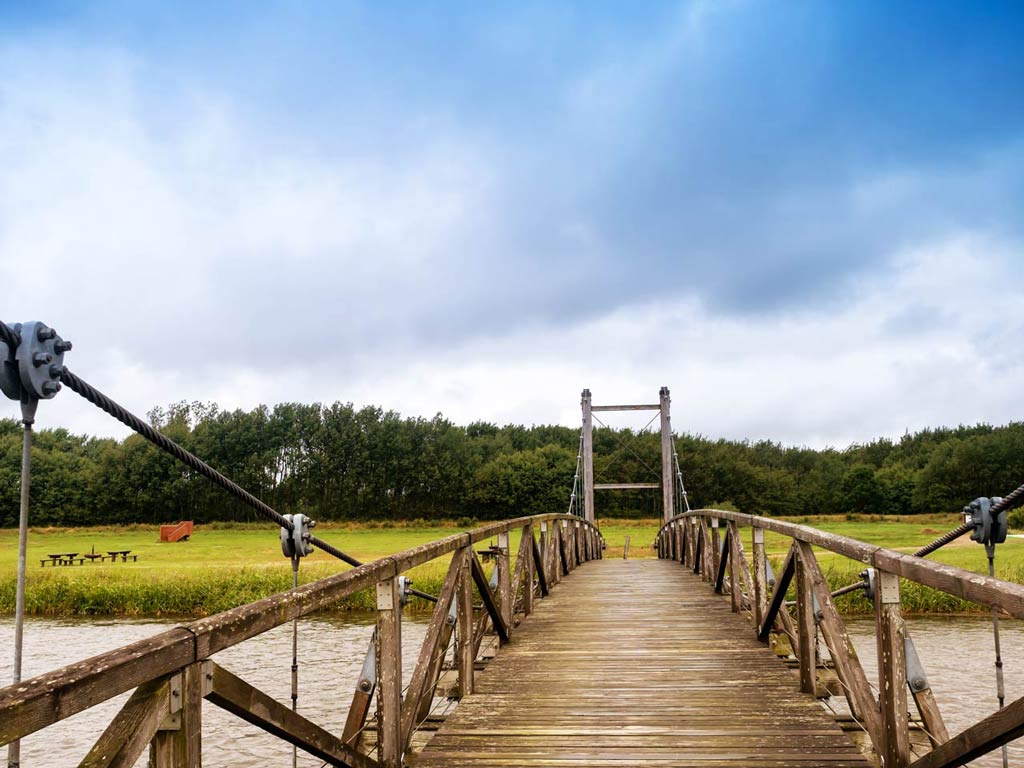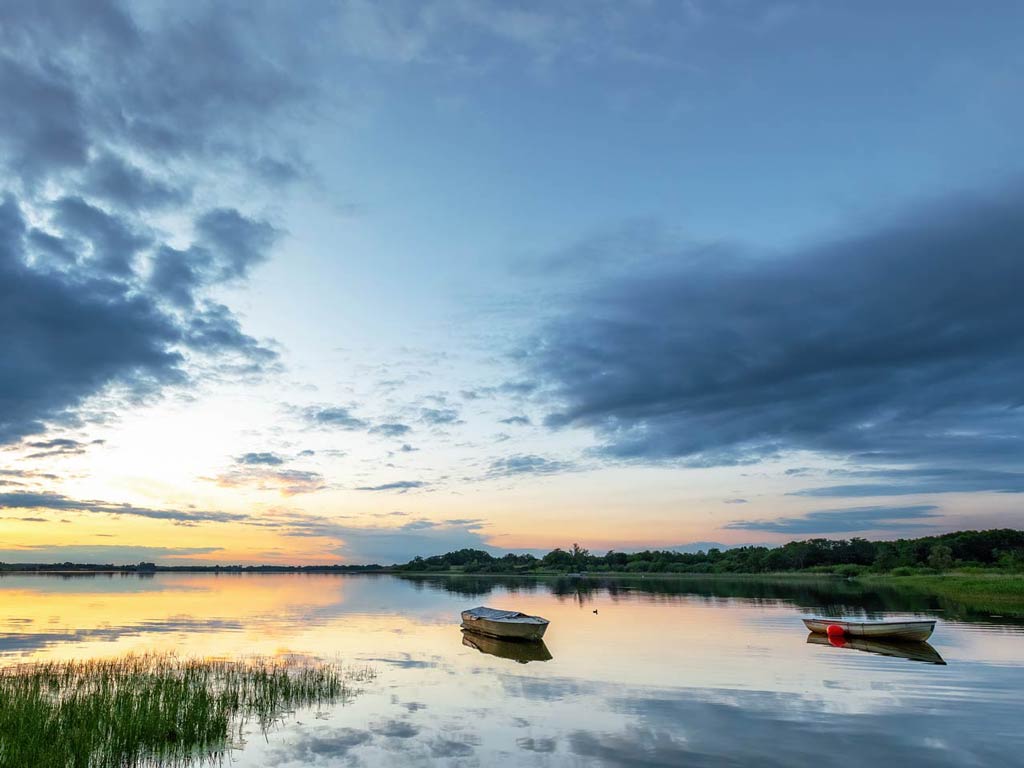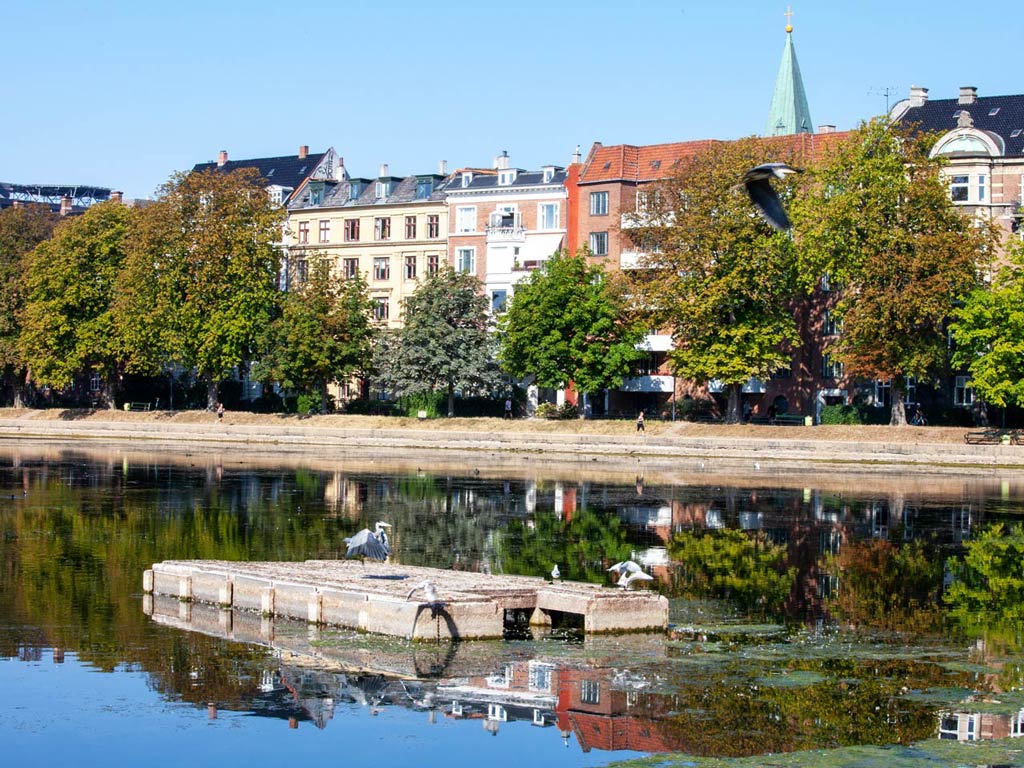It’s hard to imagine what Shakespeare could have meant when he wrote that “something is rotten in the state of Denmark.” It’s, quite literally, the happiest nation in the world! Pioneers of contemporary culture, cutting-edge design, and creators of “hygge” – The Danes have the art of living figured out. There’s one more thing, too. Fishing in Denmark is a seriously big deal.

Although it’s the smallest country among its Scandinavian neighbors, the fishing industry in Denmark is huge. Employing over 20,000 people, it’s the fifth-largest exporter of fish and fish products worldwide. This is great news for recreational anglers, too!
Denmark is surrounded by water, meaning there’s no shortage of places to cast a line. There’s the North Sea to the west and the brackish Baltic Sea to the east, both teeming with a cast of unique fish. Inland, you’ll find plenty of rivers and lakes, equally abundant with delicious specimens.
Wherever you set foot, you’ll find a fishing honey hole nearby! We’ll tell you everything you need to know about what to catch, where to go, and how to make it happen in this guide to fishing in Denmark.
Fishing the Jutland Peninsula

The Jutland peninsula boasts hundreds of miles of shoreline and plenty of inland rivers and lakes that are focal areas for Danish anglers. Comprising several different regions, you’ll decide where to go depending on your preferred targets and fishing methods. We’ll start our journey by deep sea fishing in the north, before making our way down to freshwater rivers and lakes.
Deep Sea Fishing in North Jutland
If you want to experience authentic Denmark, North Jutland is the place to go. Much like the remainder of the country, the terrain is low-lying, but the vastness of the sky is even more expansive as you reach towards the northern ends of the Earth. Ever-changing nature, breathtaking fjords, and the best deep sea fishing in Denmark make this an unmissable location!

If you came for big game fish, then the Yellow Reef is your go-to destination. Referred to as “Det Gule Rev” in Danish, it comprises an area that’s 150 kilometers long and 20 kilometers wide. You’ll board a charter boat at Hanstholm or Hirtshals and travel 30–40 miles into the North Sea to get there, and once you do, the places to deep drop become endless.
The stars of the show here are definitely monster Cod and Lingcod and you’re looking at hooking into considerably larger specimens than those found in the Baltic Sea. Gear up with a 9–22 kg rod and some heavy weights to pull these beasts onto the boat. If you’re looking for a tamer experience, go after Atlantic Mackerel, Pollock, or a variety of Flatfish to take home for dinner.
River Fishing on the Jutland Peninsula
Although it’s surrounded by saltwater on all sides, the river fishing on offer in Jutland is pretty spectacular too! Fly fishermen will tell you that casting here may not be as easy, but it’s certainly rewarding. There are rivers strewn throughout the Jutland Peninsula, however, some of the most notable ones lie near the famous floodplains of Western Jutland.

For the best Atlantic Salmon fishing in Denmark, head to the Skjern River. The season typically opens in mid-April and draws in thousands of anglers who fly fish or spin from the riverbanks. Make sure you gear up with appropriate tackle, as the Salmon here are big and strong. They come in at an average weight of 6 kilograms and it’s highly recommended that novices head out with an experienced guide.
If you’d prefer to get your hands on some Sea Trout, you’re in luck. Most of the rivers and streams in Western Jutland hold a big stock. The Omme, a tributary of the Skjern River, has a healthy population of these fish, as well as Grayling and the occasional Salmon. Most anglers tend to cast from the riverbeds of this meandering stream. However, float trips are an option too.
Fishing the Lake District
Likely the least discovered part of the Jutland Peninsula, the Lake District is seriously dreamy. You won’t find the striking fjords or rugged coastline of North Jutland here, but the trade-off isn’t a bad one. This area in the central part of Jutland is home to a whopping 74 lakes as well as Denmark’s longest river, the Gudenå.

As you would expect, this environment creates some excellent angling opportunities! Head to the Skanderborg Lakes and you’ll find the best Zander fishing in Denmark. Hooking into 1–5 kg fish is guaranteed and if you’re lucky, you may even hook into a 10–12 kg trophy. That’s not all there is on offer, either. The lakes are home to even more gamey and delicious fish including Pike, Sea Trout, Burbot, and Eel.
Head slightly east and you’ll hit one of the most productive points on the Gudenå River. The stretch between Langå’s two railway bridges is where Sea Trout come to spawn every year. These coastal fish aren’t migratory so they stay close by, making for great year-round angling. You may also come across some Salmon here, depending on seasonality.
What anglers said about fishing in Denmark
Urban Angling in Copenhagen

Sitting on Zealand, the largest and most populated island in Denmark, Copenhagen faces the Øresund. Commonly called “the Sound,” this brackish body of water is home to a variety of delicious fish. But saltwater fishing isn’t all there is to Copenhagen. You’ll also find plenty of freshwater lakes, teeming with game fish, on the outskirts of the city.
Fishing in Copenhagen Harbor
One of the easiest ways to get out on the water is to head into Copenhagen Harbor. It’s among the biggest ports in the Baltic Sea and great efforts have been taken to make it a healthy ecosystem for marine life, too. Although the water is now cleaner than it’s ever been, consuming bottom-feeders, including Flounder, Herring, and Eel, isn’t recommended.

But let’s move onto the fish you absolutely should eat! Cod fishing in the northern and central parts of Copenhagen Harbor has been on fire since 2015. The waters here get deep relatively close to shore and in the spring and fall, you’ll easily go home with a few fish for dinner. If you’re here in the late summer, you won’t go home empty-handed either – the Mackerel bite doesn’t get much better anywhere else.
If you came for the Sea Trout, head to Sluseholmen. Trout weighing over 5 kilograms are the norm in this angling hotspot year after year, so be sure to bring your heavy lures. Anglers tend to walk out to the stone island on the water and set up there, but chartering a boat is also an option. Keep in mind that the current can get quite strong here. If you’re a beginner, enlisting the help of a guide is a good idea.
Freshwater Fishing in Copenhagen
If you’re hoping to get away from the hustle and bustle of the city, a trip to the lakes on the outskirts of Copenhagen might be the perfect thing for you. You’ll still get plenty of action from hard-fighting freshwater fish, as well as the opportunity to experience a different side of the Danish capital.

For monster Pike and Perch, head to Damhus Lake. It was man-made during the Middle Ages and is located just 15 minutes from central Copenhagen by car. The shore fishing season lasts from the beginning of May through February and is allowed in a few designated areas. Gear up with your best lures, since fishing with live bait is forbidden here.
Although you can’t fish here during most of the year, we had to give them a mention. The Lakes are by far Copenhagen’s most recognizable bodies of freshwater. Consisting of 3 rectangular pods, they curve around the western margins of the city and are home to 12–14 kg monster Pike! They’re only open for fishing for a few days every year and if you’re lucky enough to be in town, don’t miss out on the chance to cast your line here.
And Let’s Not Forget about the Rest of Zealand…
Like we mentioned earlier, Zealand is Denmark’s largest island and Copenhagen is far from the only notable fishing hotspot here. On the Northern tip of Zealand, you’ll come across Ise fjord, which is home to some of the best coastal Trout fishing in the country. If you’d rather freshwater fish for Pike, Perch, and Zander, there’s that too. Check out Sorø Lake, Tuel Lake, and Tystrup-Bavelse Lake.

Head to West Zealand, and you’ll have the opportunity to fish the Great Belt. Located on the opposite side of the Sound, this fraction of the Baltic Sea is home to Cod, Sea Trout, Mullet, and a variety of Flatfish. Finally, the marshes and lakes in Southern Zealand include the famous Maribo Lakes and Nakskov fjord. These areas are packed with Whitefish, Pike, Zander, and Perch.
Fishing on Funen and Bornholm Islands

Last, but certainly not least, we’ll explore the fishing opportunities on Funen and Bornholm Islands. Both located on the Baltic Sea, each has its own charms, but they’re equally famous for incredible coastal fishing.
Fishing for Sea Trout around Funen
Anglers from all over the world flock to the island of Funen to fish for Sea Trout. Best of all, there’s never a bad time to do so! Although you’ll certainly be more successful between spring and fall, you can also get lucky in the winter months.
Whether you’re a fly fisherman or use conventional spinning methods, you’ll have a field day fishing for Sea Trout around Funen’s diverse landscape. You shouldn’t expect to go home with fish in the double digits, but you will be rewarded for your efforts. The average fish here range between 35–55 centimeters, while trophies reach up to 80.

March, April, and May are active feeding seasons for these fish and you can hook into keepers both from shore and from a boat. Summertime brings even more fish into the water, although you may need to travel further from shore to find waters with the ideal temperature for Sea Trout. The wintertime sees fewer fish, but if you’re lucky enough to come across a shoal, it’s an experience you won’t soon forget.
The Pearl of the Baltic Sea
Though it seems fairly isolated in the Baltic Sea, Bornholm Island isn’t all that hard to reach. Take a short flight from Copenhagen or the famous disappearing bridge from Sweden and you’ll soon be in fishing paradise. Renowned for its rugged coastline, deep waters, and inland lakes it truly earns the name “Pearl of the Baltic Sea.” Best of all, the island is small enough for you to get a taste of it all on just a short trip!

Anglers fishing from shore won’t want to miss out on casting for Garfish and Sea Trout. It’s a year-round activity made possible by the food-rich Baltic Sea. If you’ve got access to a boat, add Cod to your list too. Jigging or trolling for these fish in the spring and fall is both exhilarating and rewarding. Up for freshwater fishing instead? The inland lakes and marshes are stocked with Perch and Zander.
What You Need to Know
Now that we’ve covered some of Denmark’s most incredible fishing locations, it’s time to deal with the logistics. Below, we’ve outlined the basics pertaining to fishing licenses, as well as fish seasonality and harvesting.
Fishing Licenses

All anglers between the ages of 18 and 65 need to purchase a fishing license before heading out. This applies to both freshwater and saltwater anglers, fishing both from shore or from a charter boat.
If you are a Danish resident, or an angler living here for an extended period of time, you can purchase a year-long fishing license for around 214 Danish crowns. If you’re only here for a day or a week, don’t sweat it! A daily fishing license is available for purchase at around 46 Danish crowns and a week-long license will run you about 150 Danish crowns.
Another important distinction to make is between the licenses you’re purchasing. If you’re fishing in Denmark with light tackle (fishing rods, jigs, harpoons), purchase an angler’s fishing license. If you’re using nets, traps, and hooks, you’ll need to get a recreational angler’s fishing license for anyone over the age of 12.
Fish Seasonality and Harvesting Regulations

There are hundreds of fishing locations in Denmark and staying on top of seasonality can be tricky. Regulations often vary from one body of water to another, so it’s always best to consult with the Danish Fisheries Agency before heading out.
It’s also important to note that many natural lakes and streams fall under private ownership. This often isn’t a problem, as most local angling societies are happy to hand out permits. Regardless, you’ll need to be extra cautious in these areas to ensure you’re fishing lawfully.
Denmark: The Happiest Place on Earth

If the things you already knew about Denmark – quality of life, design, hygge – didn’t already make you want to visit, the angling on offer certainly will. Whether you’re a saltwater or freshwater angler, a fly fisherman, or a deep sea enthusiast, this Scandinavian island country has something for you.
Combine a trip to the capital with incredible fishing in Copenhagen Harbor and the surrounding lakes, head to Northern Jutland for deep sea fishing that rivals warmer waters, or explore the Baltic Islands for some of the best coastal fishing around. So, what will it be on your Danish fishing adventure?
Have you been fishing in Denmark? What did you think of the incredible landscape? Let us know in the comments below!


